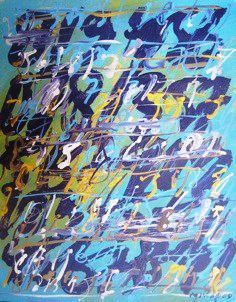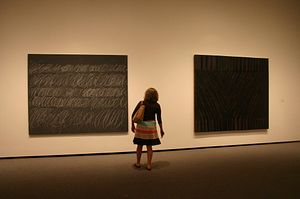Following is the first piece on art in Asia, by our new contributor Robert ‘Bob’ Tobin, founder of the Asian Collection Contemporary Art Gallery in Tokyo, Japan.
The most common question I’m asked in my gallery is, ‘How do you find your artists?’
I usually give a short answer and say, ‘I go to a lot of shows to find just one.’ And that’s the truth—I’m looking for diamonds and I look at a lot of works before I choose a new artist. So, I go to as many of the art school graduation exhibitions that I can in Japan, Thailand and Indonesia, and also hit the museum shows, annuals and biennales. I also ask our existing artists and their teachers for recommendations.
In Japan, people are always looking for something new, so I have to keep looking for work that will excite me and our clients.
My advice to young artists is always the same: get your work out there and exhibit anywhere you can—hotels, coffee shops, restaurants. Enter every competition open to you, create a website, sell via the Internet and get your work seen. It’s got to be out there.
Gallerists like me, as well as collectors and potential clients, go to these shows and they can easily look at your site. Artists need to make it easy for people to see their work—and I don’t mean dropping by a gallery with a portfolio or sending unsolicited emails. I can’t remember ever choosing an artist who sent an email with a large attachment. I get too many of these and don’t recommend this strategy as a way of getting representation.
As I said, I go to shows—a lot of them—or look at the websites and catalogues if I can’t go in person. When my partner and I find an artist we like, we schedule a meeting and a portfolio review. We’re looking for a good fit with what we do in the gallery. That is for us, young artists with works with stories, portraits and abstract works—art that engages us. As you can tell from our website, we and our clients are mesmerized by repetitive, colourful patterns, such as these works from Mario Tauchi and Agus Purnomo.
Then when we finally meet with an artist, we focus on the work, understanding more about what he or she is communicating, and learning more about the goals and the dreams of the artist. We also look at his or her resume and the range of work. The most important is the work itself, but the personality of the artist matters. We choose to meet with the artist because we like the work, but we also want to know if the personality is a good fit with ours. If the work is great, but it looks like the relationship will be high maintenance, we’ll most likely pass.

Painting by Agus Purnomo
But the visits to all of these shows, and reviewing web sites, catalogues and portfolios, is only part of the story. We actually find some of our artists by accident, and this is always a great pleasure. It’s like a surprise birthday present or an inheritance you weren’t expecting. I consider finding a new artist by accident one of my greatest pleasures—up there with how coffee fans must feel about finding the perfect espresso.
I’ll share an example of just this sort of experience I’ve had, next week.

































